Why Random Encounters Shouldn’t Disappear in RPGs
How random encounter system can be designed in a modern and enjoyable way in current RPGs
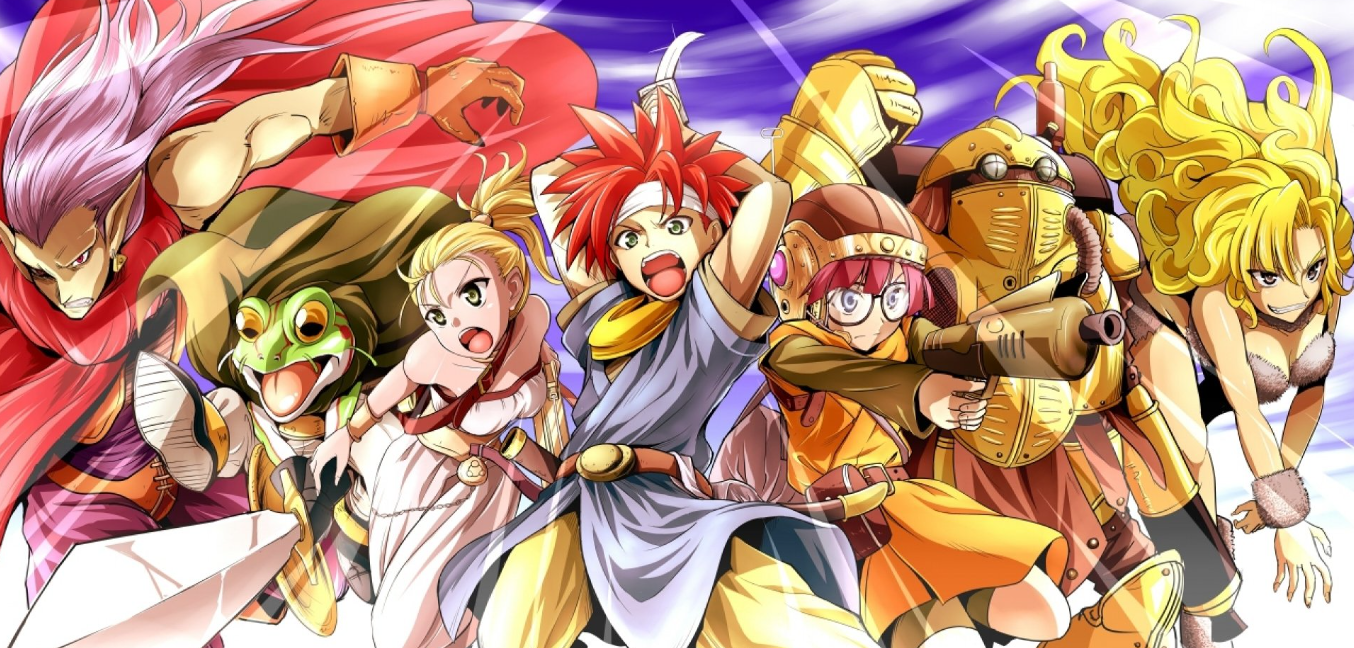
If the random encounter system disappears from the turn-based RPG industry, what would that hurt us? What gaming experiences could not be captured by a Visual Encounter System?
A “video game Encounter System” is an algorithmic system that allows a player to meet playable and non-playable characters to interact with them in their gameplay. In turn, Random Encounter System can be defined as a game design system that allows the player to encounter characters or creatures (offensive or not) “randomly” on their journey without being able to see the NPCs in advance.
Random encounters were a feature of Dungeons & Dragons (D&D) from its beginnings in the 1970s, in this context, also known as “wandering monsters”, and persist in that game and its offshoots to this day. This encounter system is usually determined by the gamemaster (GM) by rolling dice against a random encounter table. In this case, there is a battlefield separate from the world map.
In the 1980s, the first turn-based RPGs developed algorithms inspired by this D&D system, in order to give a similar experience of an adventure subject to unexpected encounters. As in D&D, the “rate of randomness” could vary depending on the terrain (and/or time/weather).
A simple example of a Random Encounter System algorithm would be as follows:
- Each step set x to a random integer between 0 and 99.
- If in plains, and x < 8, a random encounter occurs.
- If in swamp, desert, or forest, and x < 16, a random encounter occurs.
In the 1980s, the first turn-based RPGs, like Wizardry (1981), developed algorithms inspired by this D&D system, and not just because of hardware limitations, since the first action-RPGs of the 1980s, such as Dragon Slayer (1984), did not have random encounters.
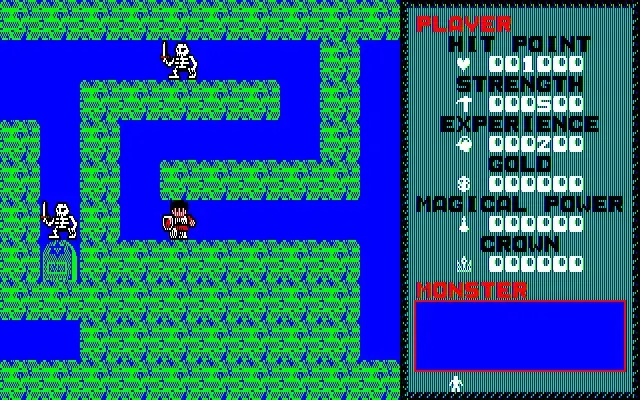
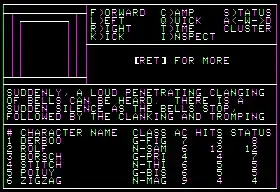
From left to right: Dragon Slayer (Sharp X1); Wizardry: Proving Grounds of the Mad Overlord (Apple II).
The idea of the first turn-based RPGs was to bring to video games an experience similar to a D&D adventure subject to unexpected encounters with different groups of enemies at the same time. However, electronic RPGs have created many variations of algorithms for random encounters, improving this experience, in addition to variations in music and art design for post-encounter transition moments.
Since the 1990s, turn-based RPGs have partially or fully implemented Visual Encounter Systems as well, where it is possible to anticipate (and sometimes dodge) possible encounters with characters or creatures by seeing them along the way. This occurs at some specific break-in or breakout moments in the Final Fantasy series since the SNES, for example, and in all moments of Chrono Trigger (1995). In the first case, with battlefield transition; in the second case, only with music transition and battle mode in the same scenario.
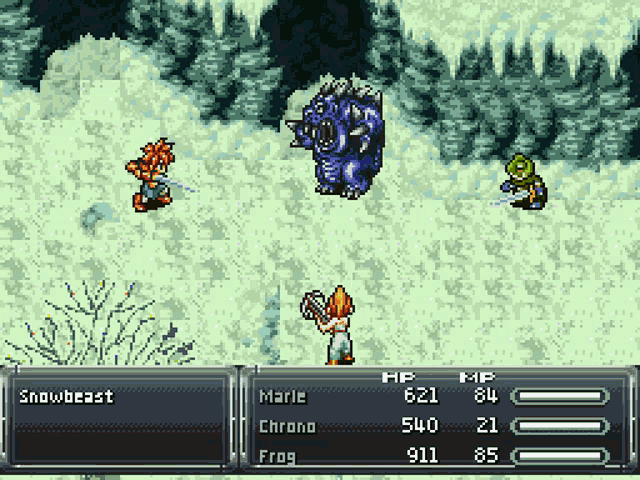
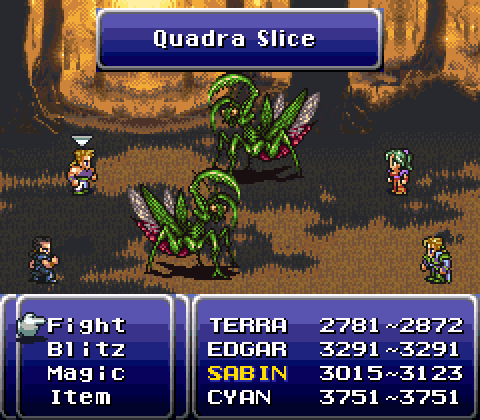
From left to right: Chrono Trigger; Final Fantasy VI.
But it’s only been in the last decade that the visual encounter system has become a mainstream trend in AAA RPGs. Both in series that migrated to action-RPG or quasi-action-RPG systems, such as Final Fantasy, and in series that remained in a turn-based system, such as Dragon Quest and Shin Megami Tensei.
From here, I will expose some differences in the proposals of these two systems and why one cannot replace the other. Finally, I’ll provide some game design suggestions to make a random encounter RPG more modern and enjoyable.
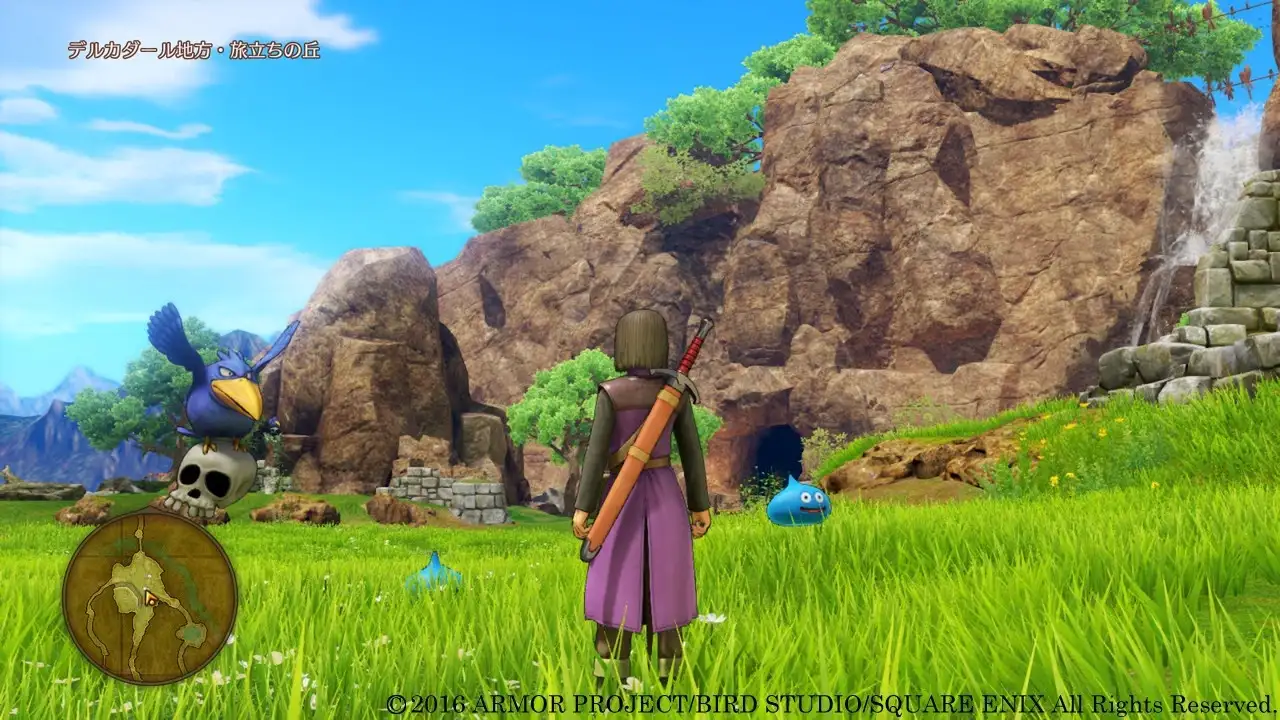
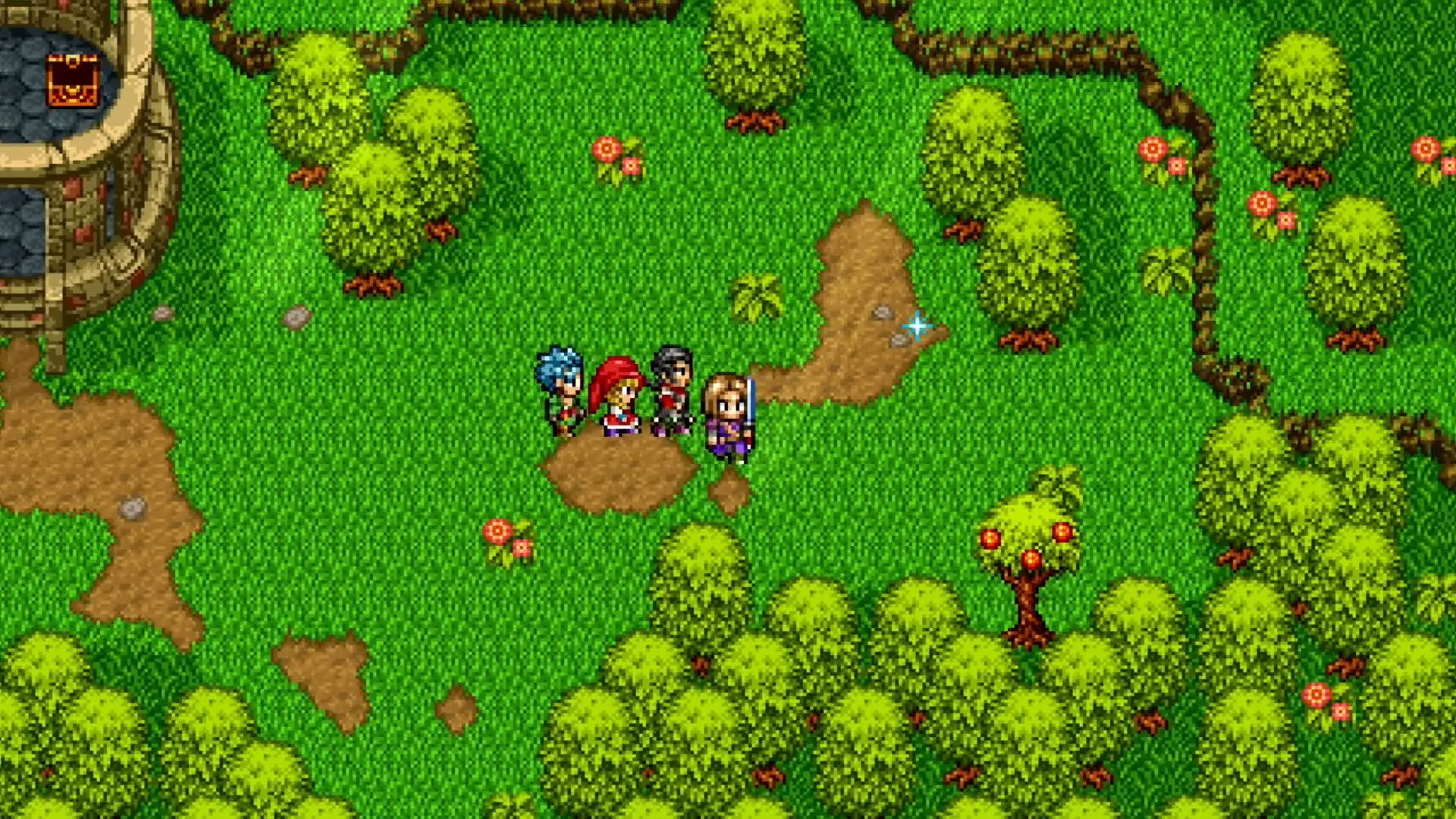
From left to right: Dragon Quest XI in 3D mode (with Visual Encounters); Dragon Quest XI in 2D mode (with Random Encounters).
Visual Encounters vs Random Encounters
To many, it may seem that visual encounters are “naturally” better than random encounters, or even visual encounters may seem like a “natural evolution” from random encounters. In this topic, I will argue that these two perceptions are wrong.
Assume, by hypothesis, that the visual encounter system is better than the random encounter system. This means that (1) visual systems can do everything that random systems do at an equal or superior level of quality, and (2) in at least one of those things the visual encounter system does it better.
By method of reductio ad absurdum, I will show that there is at least one thing that the visual encounter system cannot do as well as a random encounter system, in order to contradict premise 1, and thus proving that not always visual systems are better.
It may seem like little, but if there’s one thing visual encounters can’t do as well as random encounters, it conveys a sense of surprise and vulnerability in a place with a compromised field of vision. Maybe you’ve already played classic Shin Megami Tensei or Pokémon titles, and you know what I’m talking about.
When you are in a dark cave or in a forest in Pokémon, it is expected that you can be attacked at any time for not being able to see your surroundings accurately. If you want to preserve a third-person perspective or an isometric view, this experience cannot be developed very well with a visual encounter system. This contrast of experiences can easily be seen when confronting cave exploration in Dragon Quest XI S: Echoes of an Elusive Age — Definitive Edition (2019), directed by Takeshi Uchikawa, in 2D and 3D modes.
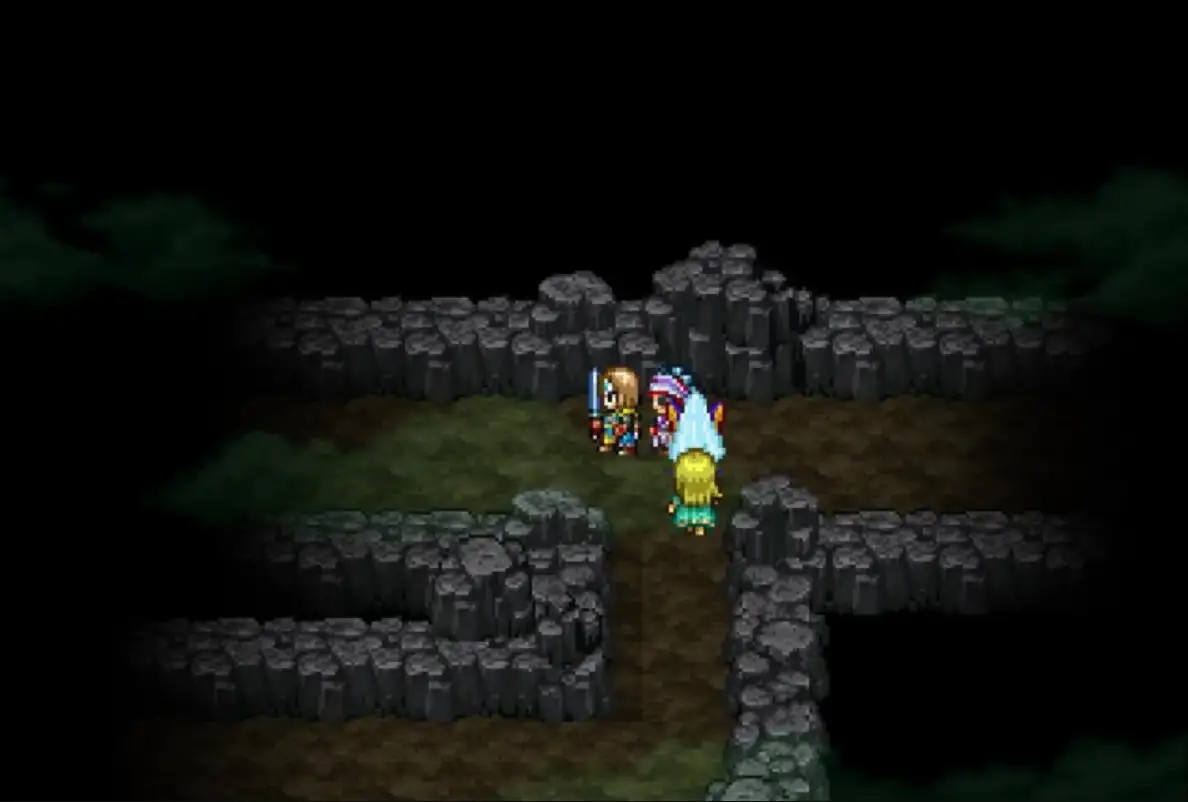
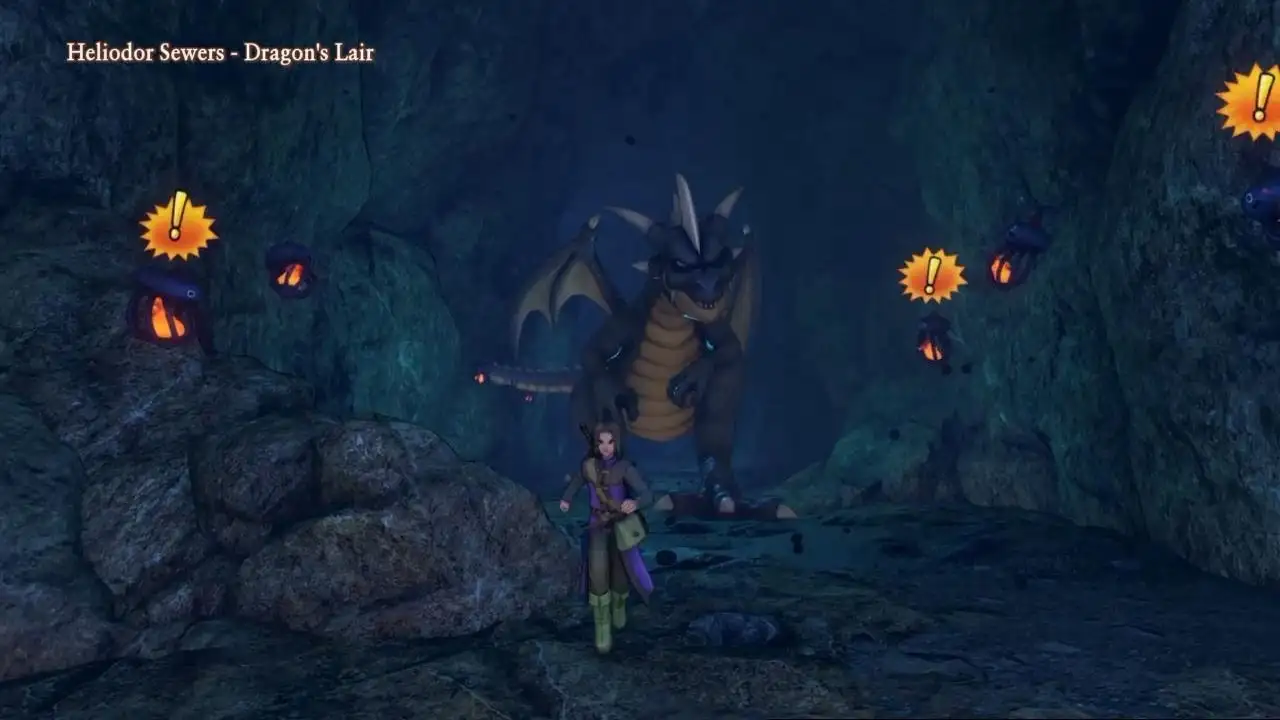
Of course, visual encounters also have advantages, especially for the following experiences:
- Better immersion when presumably playable characters would be able to see enemies nearby and anticipate some of their actions;
- Allows the creation of ecosystems from creatures which the player can establish visual encounters with;
- It tends to have a more fluid transition from exploration moments to battle moments.
In fact, if random encounters improve immersion in places of limited visibility and increase the tension of vulnerability and unpredictability, which can be interesting in some video game proposals, on the other hand, visual encounters improve immersion in places where the player can see clearly what is in front of you.
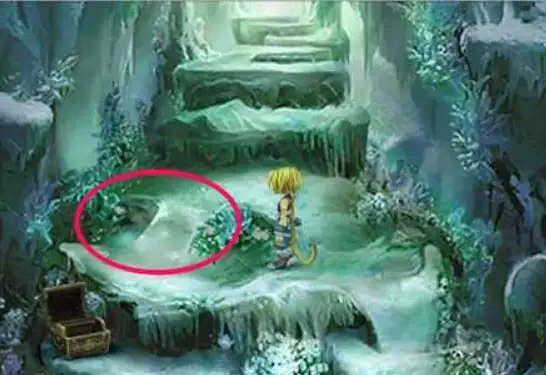
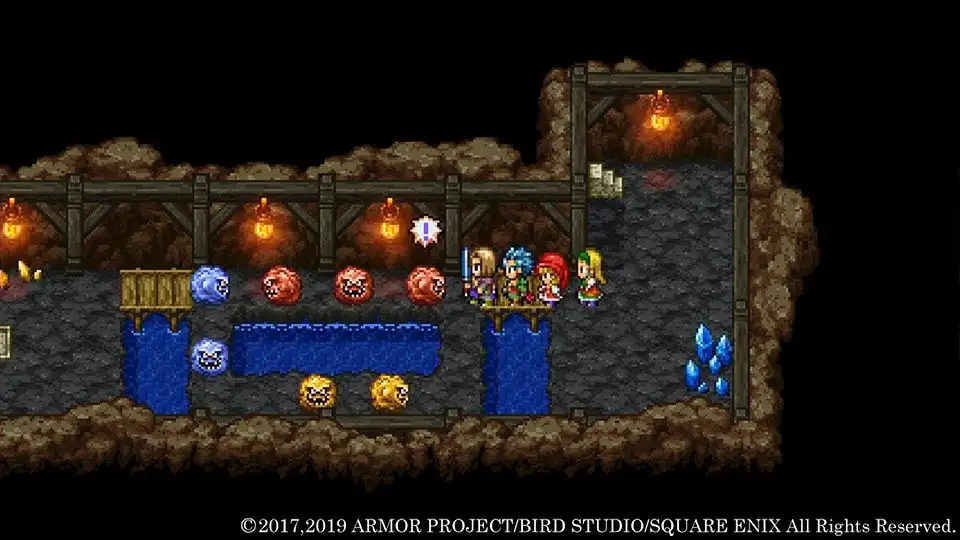
From left to right: Ice Cave from Final Fantasy IX; Dragon Quest XI S.
This does not mean that random encounters cannot occur in the same game. Preferably, visual encounters can be alternated with random encounters, in order to convey the idea that it is a place where enemies are easily visible by characters or to indicate that there is a specific place where enemies spawn, like in the Ice Cave from Final Fantasy IX (2000), with direction and battle design by Hiroyuki Ito, where monsters appear from cave openings where icy air blows.
As for the creation of ecosystems, this, unfortunately, seems impossible to replicate in moments of random encounter, which is all the more reason to prefer to alternate the two experiences. As I have already argued in another gaming essay for SUPERJUMP, The Poetics of Narrative Design in Video Games (2021), this means establishing routines for the creatures of the world, behavior variations for different species, and types of interactions with other creatures or with the player.
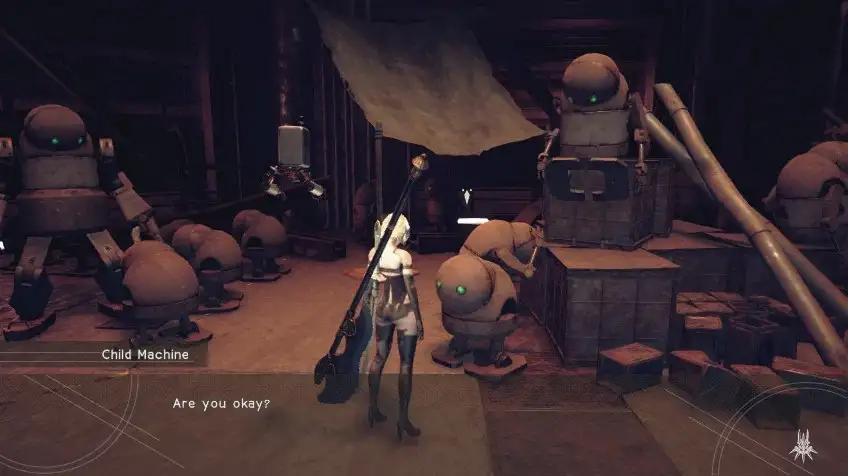
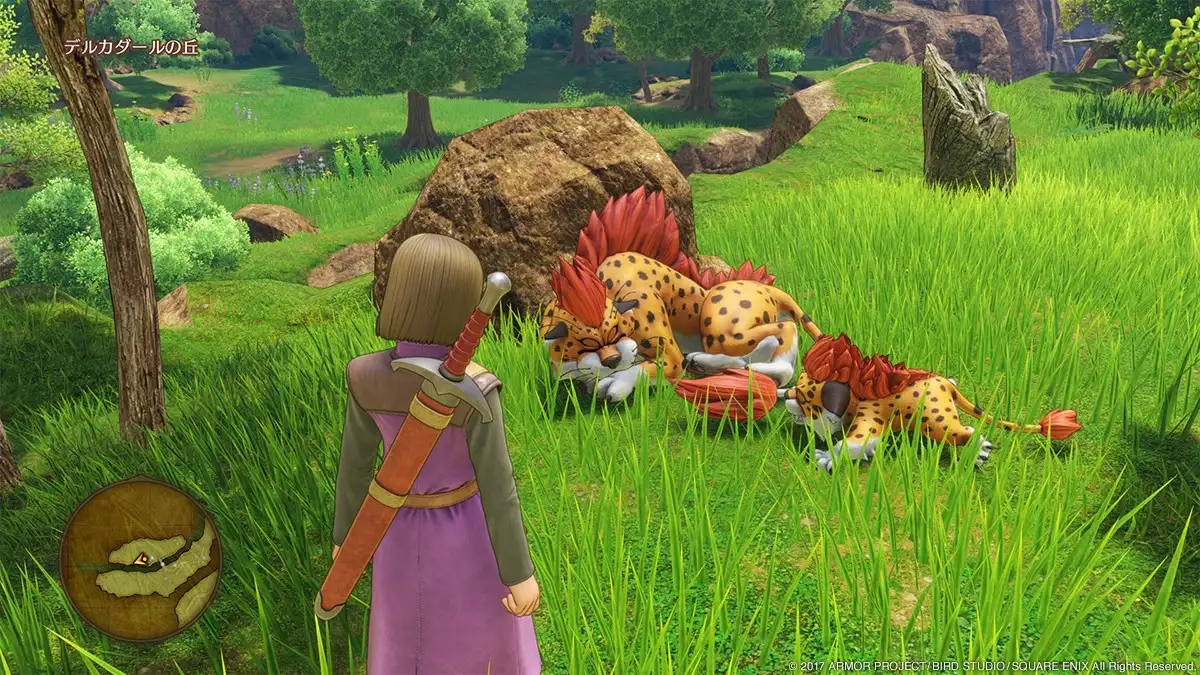
From left to right: NieR: Automata; Dragon Quest XI.
RPGs like Dragon Quest XI (2017) and NieR: Automata (2017) apply some interesting concepts to the game’s proposal. In Dragon Quest XI’s scenarios, written and designed by Yuji Horii, many of the creatures are like animals, and it is interesting that they are shown in a more integrated way with their habitat. In NieR: Automata, directed by Yoko Taro, it is also of great value to show the robots (allies or enemies) with behaviors that resemble those of humans.
Although RPGs with visual encounters can theoretically provide immersive experiences in the creature ecosystem, this rarely happens in practice. In fact, most of the time simply enemies are indicated by symbols, as in The World Ends with You series, or they are represented by a generic enemy model, as in the Persona series.
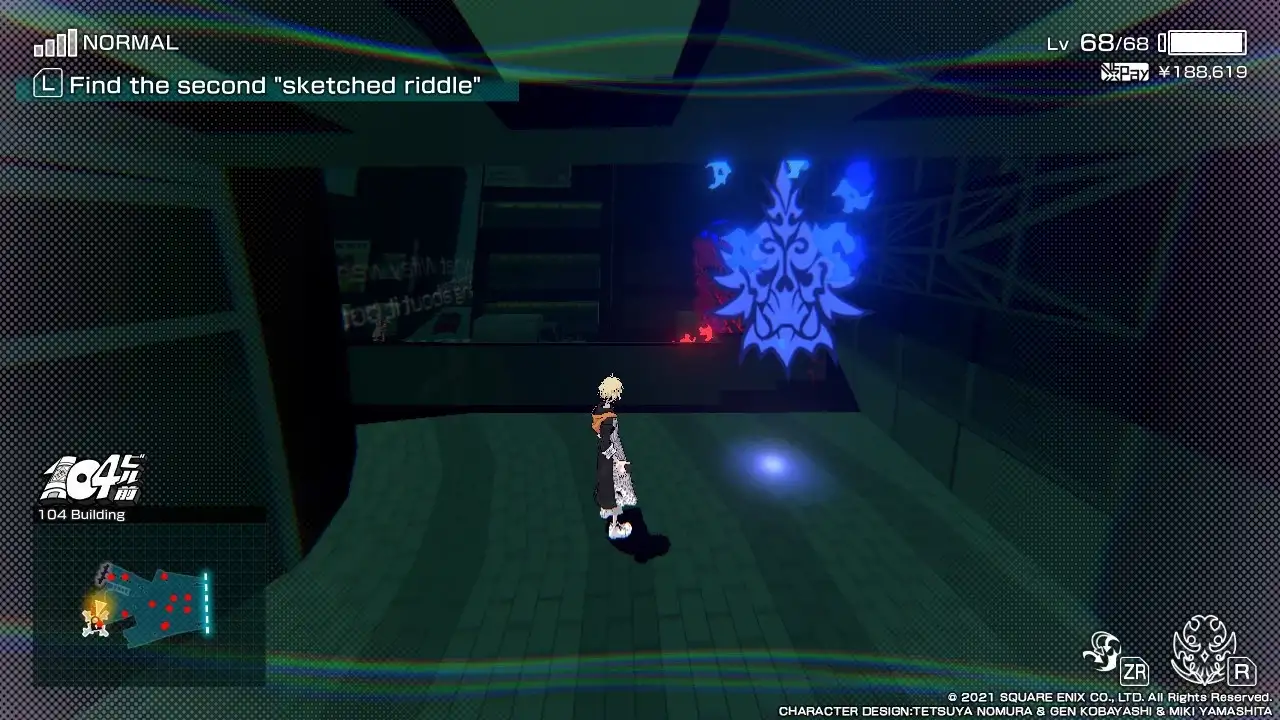
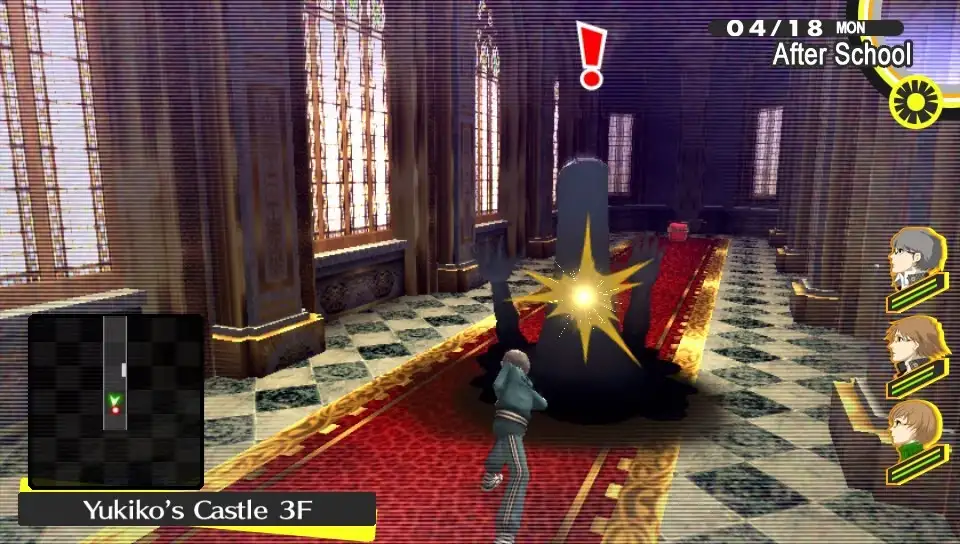
From left to right: NEO: The World Ends with You; Persona 4 Golden.
There are exceptions, and more and more there are RPGs with visual encounters where there are well-made models of the creatures of the world that live up to their personality and diversity, as in Pokémon Legends: Arceus (2022), directed by Kazumasa Iwao, and in Shin Megami Tensei V (2021), directed by Shigeo Komori. But even these games are still a long way off to offer a truly immersive ecosystem like a survival game, a stealth game, or an immersive sim.
Almost invariably the animations of creatures in RPGs are very limited and the routine of their behavior, if any, is extremely repetitive and predictable. This results in greater ease in dealing with enemies, and in the case of Shin Megami Tensei V, it contradicts the sense of vulnerability and fear that the narrative, music, and art direction suggest.
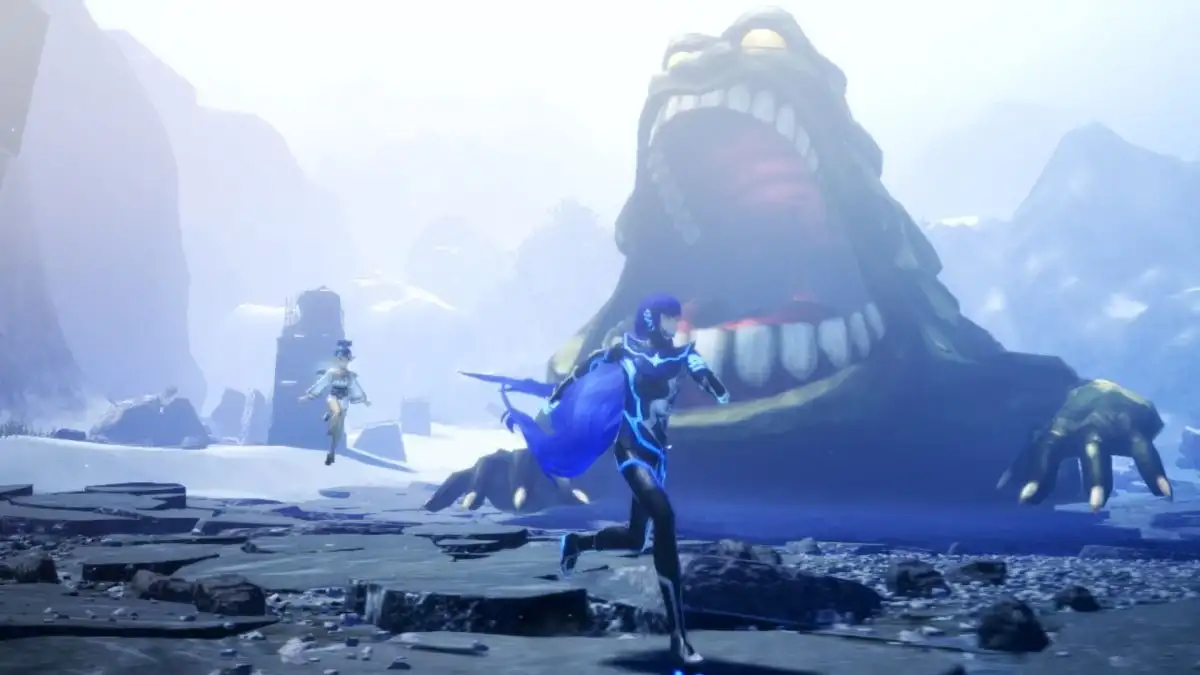
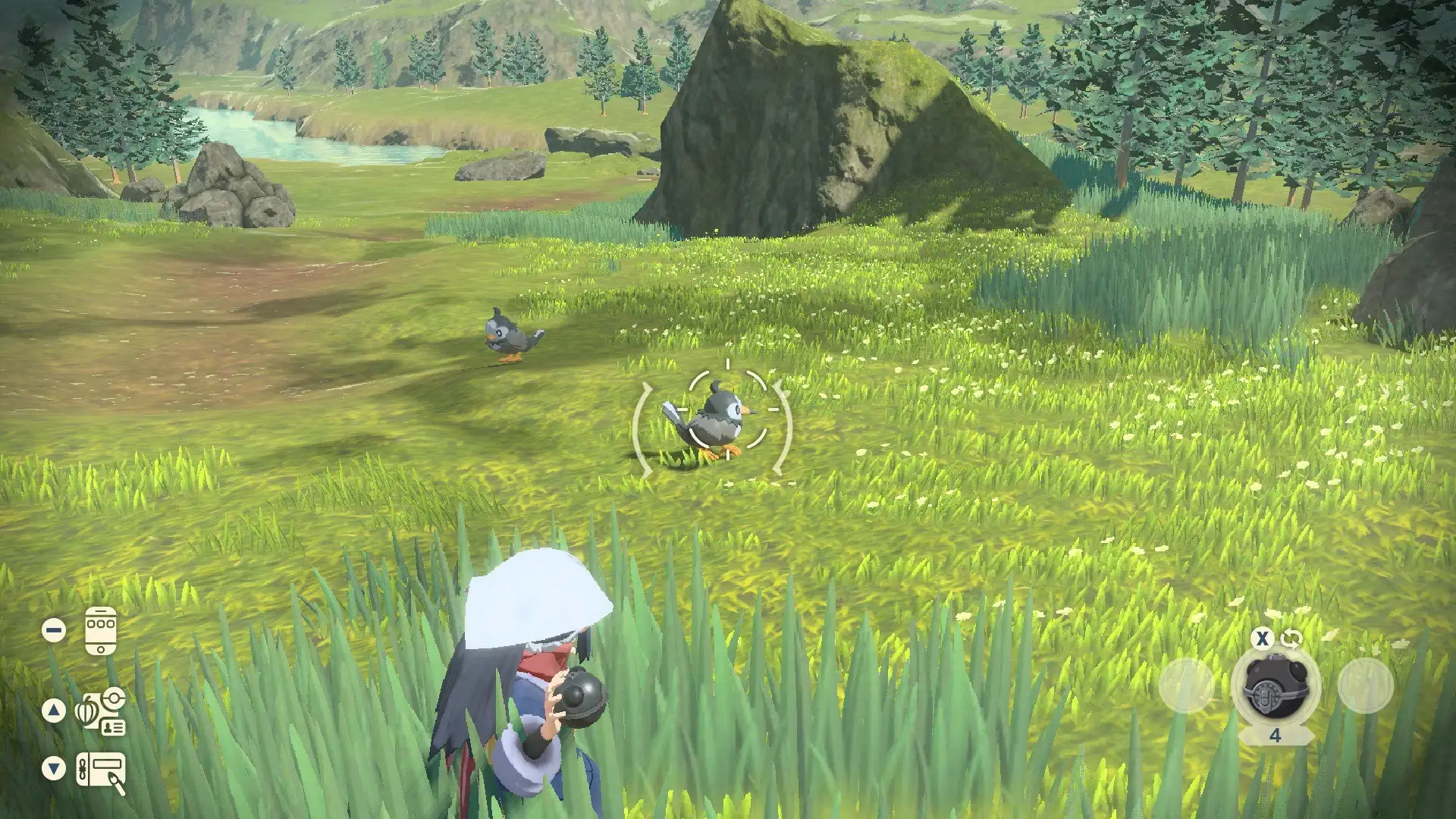
From left to right: Shin Megami Tensei V; Pokémon Legends: Arceus.
Finally, there is the advantage of fluid transition from exploration to battle moments. In some games, this works very well, especially in action-RPGs. Which is especially useful for merging battle design with art direction and narrative design.
In Bloodborne (2015), directed by Hidetaka Miyazaki, for example, when a powerful enemy appears in a scenario, there is no significant visual change that breaks the Lovecraftian atmosphere, only a piece of epic music that starts without breaking with the dark and gloomy sound direction. In NieR Replicant ver.1.22474487139... (2021), directed by Yoko Taro, there are often changes of perspective in the battle, but they are dynamic, and the music sometimes instead of becoming epic remains melancholy, insinuating a sad tone of the story behind that battle.
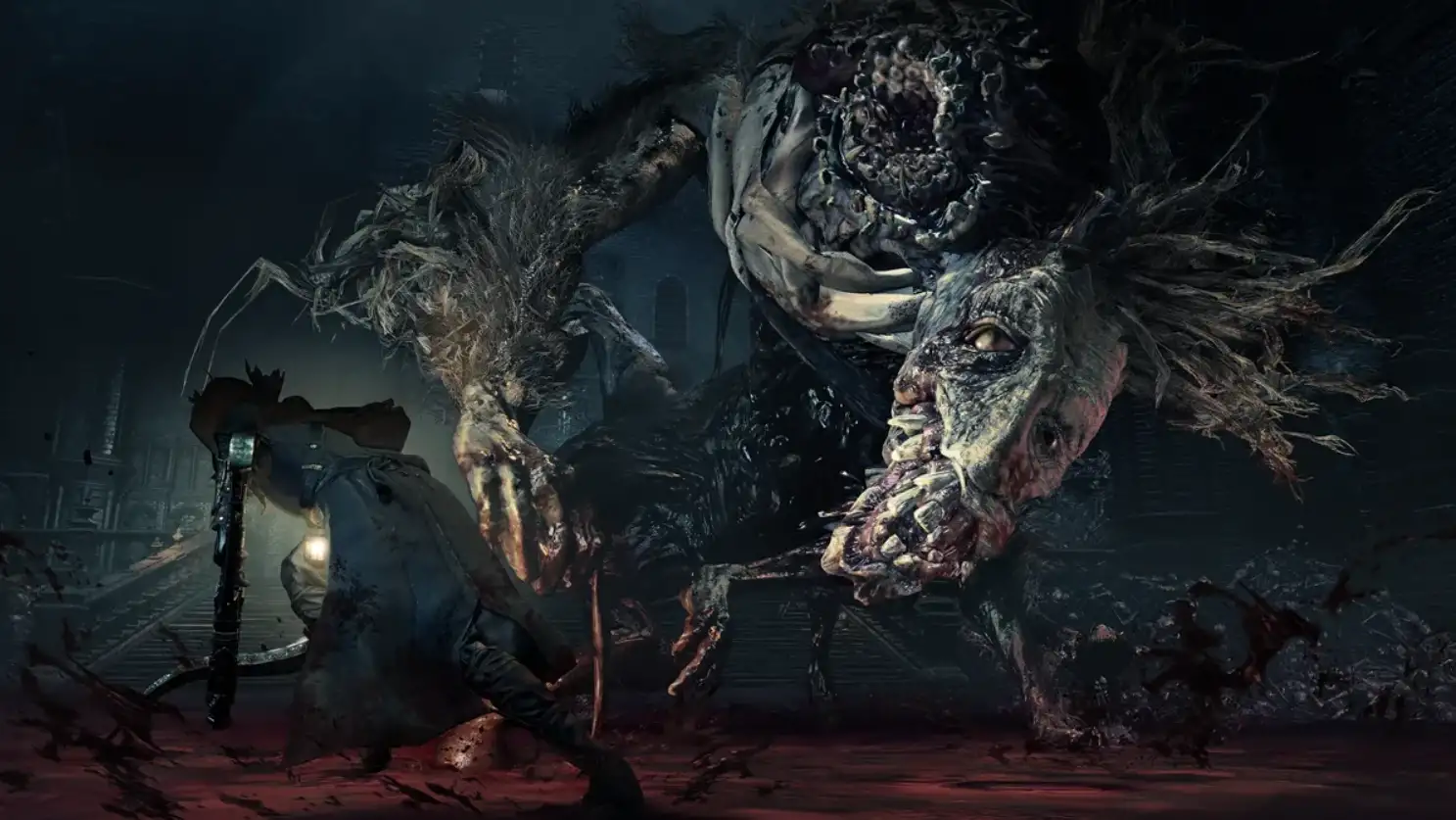
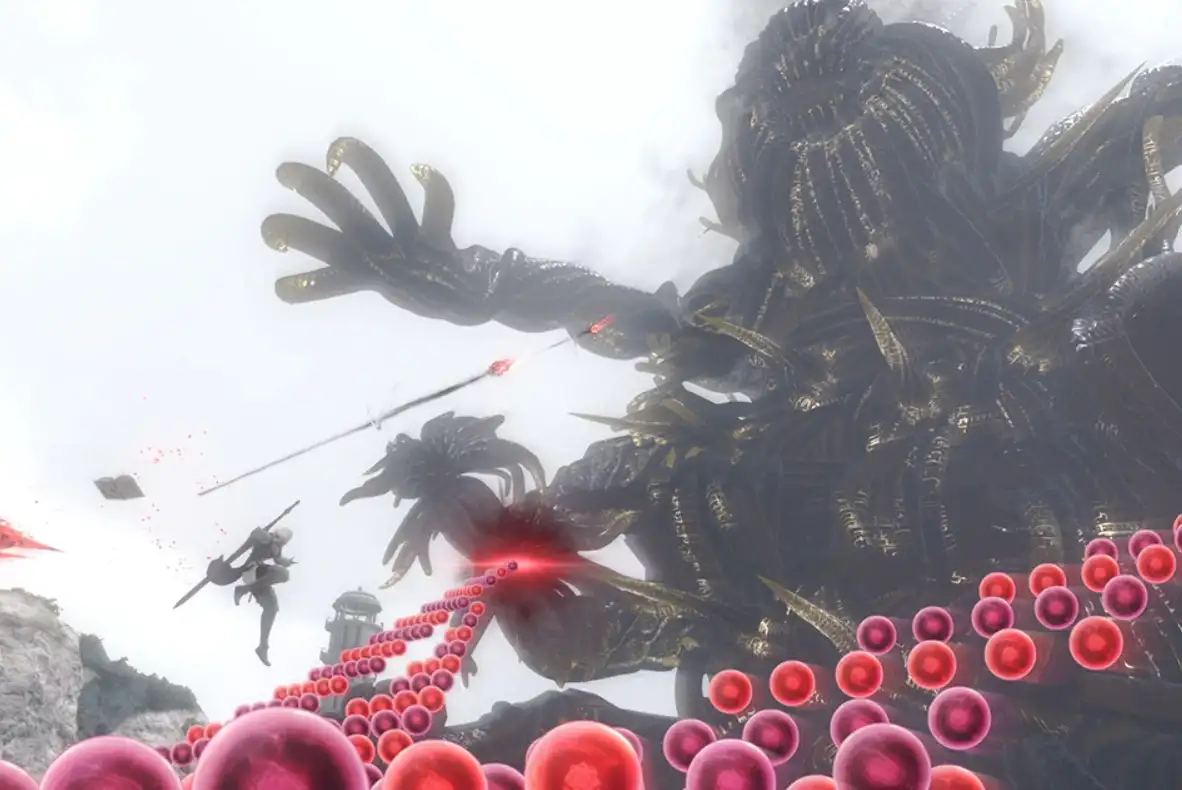
From left to right: Bloodborne; NieR Replicant.
However, In turn-based RPGs, visual encounters with an enemy do not usually correspond to the number of enemies we will encounter in the battle scenario. A single enemy sighted can correspond to an entire herd of the same species (or even a group of different creatures). Moreover, transitions to battles are not immediate in RPGs with visual encounters. I’m not just thinking about turn-based RPGs with visual encounters, like the aforementioned Shin Megami Tensei V and Dragon Quest XI.
Video games like Xenoblade Chronicles series, created by Tetsuya Takahashi and Koh Kojima, which are action-RPG but which are more conservative in separating “battle mode” and “exploration mode” already offer a clear break between the two moments. And in cases such as Tales of Symphonia (2003), it even migrates completely to an independent battle scenario, just like in traditional turn-based RPGs.
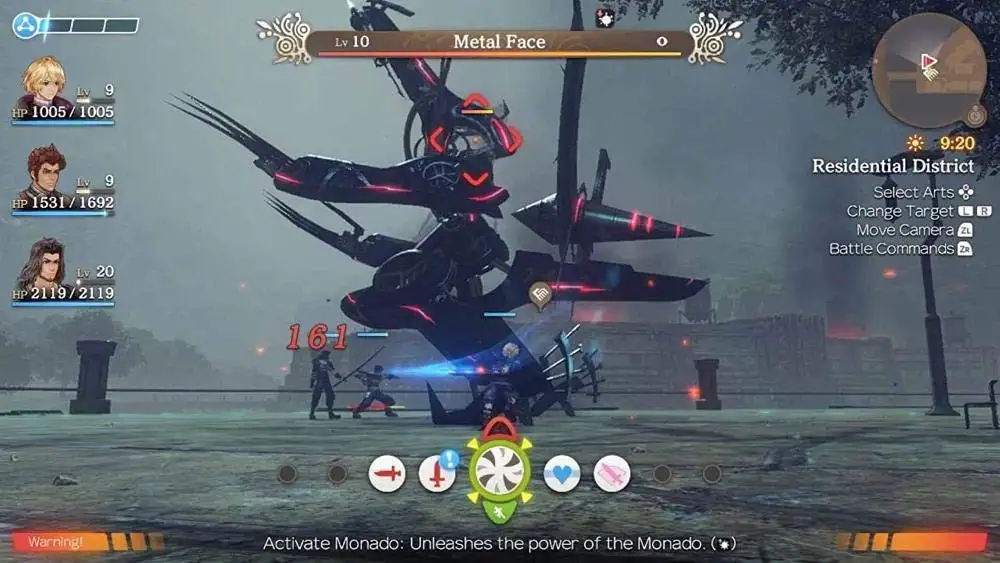
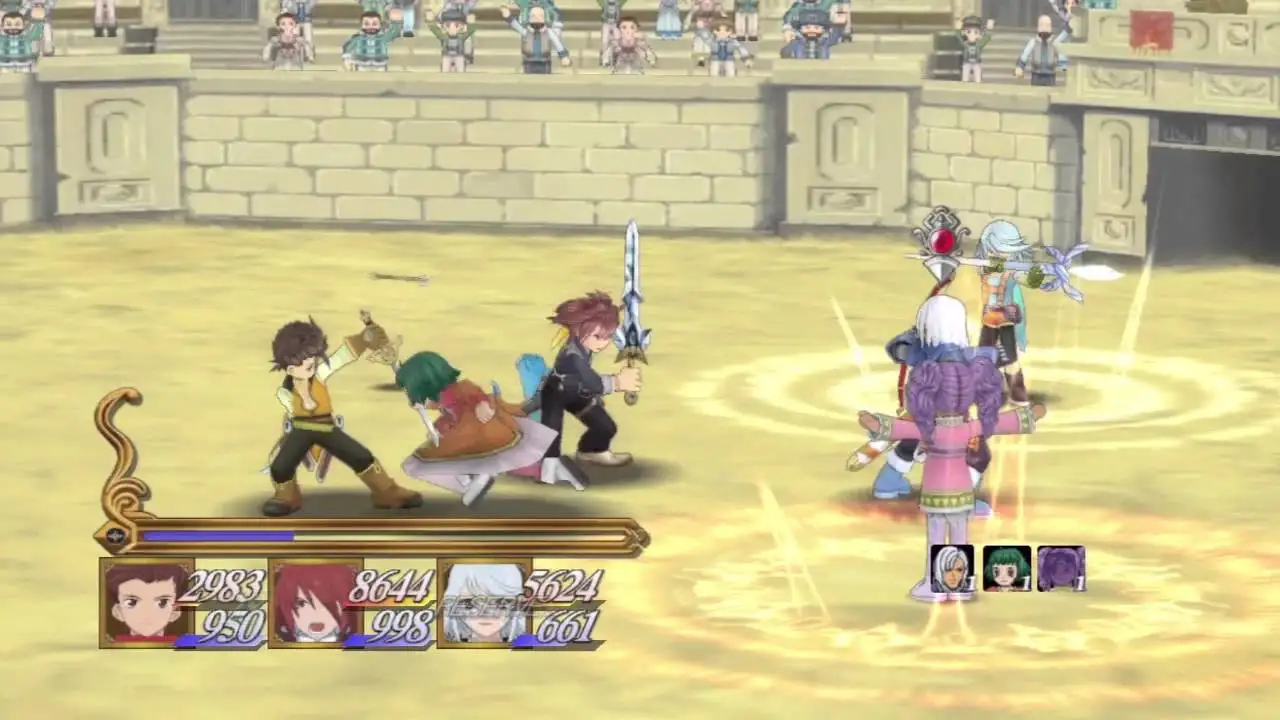
From left to right: Xenoblade Chronicles: Definitive Edition; Tales of Symphonia.
In the next topic, I‘ll explain game design tactics to improve and modernize the random encounter system in order to reduce its flaws and make it preferable in some cases.
Random Encounter System Updates
Here I will present three aspects that can be improved in a modern random encounter system.
- Coherence of the random encounter system with other game design elements;
- Specialized algorithm;
- Good audiovisual transitions;
In the real world, we don’t see creatures spontaneously arise to attack us. In general, even when they are not seen by us in advance, at least they are noticeable and potentially could have been seen. But, as Alberto Giacometti stated, “the object of art is not to reproduce reality, but to create a reality of the same intensity.”
The game design elements in a video game do not need to replicate what happens in reality, but they need to be coherent, making the player feel in a palpable and believable fictional world. In this sense, it is interesting that the random encounter system is well-grounded in the fictional world. For example a blind protagonist; a phantom or otherwise invisible enemies; a dark setting, like a cave; or small creatures in the middle of a lot of bush.
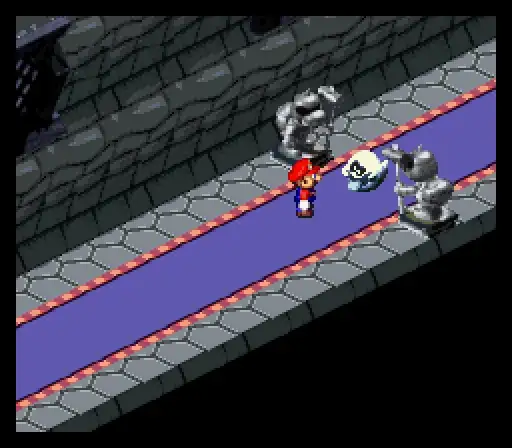

From left to right: Super Mario RPG; Pokémon Omega Ruby & Alpha Sapphire.
Another important aspect to modernize the random encounter system is to refine its algorithm. If using the simple algorithm mentioned in the previous topic, the player will be able to find an enemy in a “too random” way, he could even enter a new battle when he has just finished one, walking only one cell, something that could happen in the first Dragon Quest (1986). One way to avoid this is to set a minimum number of steps after a battle in which the player is not likely to enter a new encounter. Furthermore, it may be interesting that the number of random encounters is higher in one scenario and lower in another. For example:
- Set x to a random integer between 64 and 255.
- For each step in plains, decrement x by 4. For each step in forest, swamp, or desert, decrement x by 8.
- When x < 0, a fight ensues. Go to step 1.
This ensures that the player will not experience more than one random encounter every eight steps. In some RPGs with a similar algorithm, it is possible to pause the game to reset the counter, which is a feature used by speedrunners. These specifications are still very simple, but it is possible to further refine the random encounter algorithm in order to specialize it for a specific gameplay proposal within each scenario and for different types of creatures.
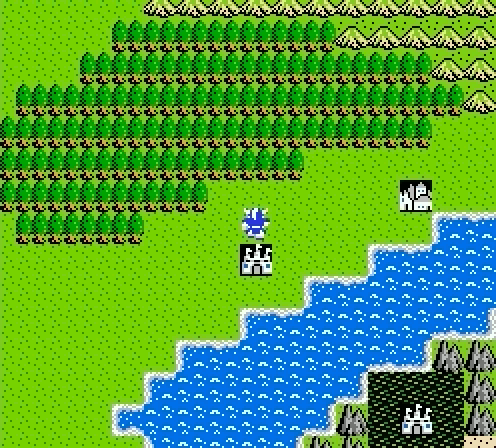
Another very important thing is the audiovisual design around a random encounter. From a visual point of view, there is a natural choice in random encounters: since the enemy appears abruptly, generating a break in expectation, it is interesting to take the opportunity to transition to a specific battle scenario, deepening the experience of this rupture.
The experience of breaking with exploration can be exploited in favor of the RPG, turning something that could initially be seen as a problem into an advantage for the purposes of the work. A smart thing to do is take the opportunity to transition from a more distant and impersonal experience in third-person or an aerial view to a closer and more personal experience in first-person, increasing the immersion in battle, Like the aforementioned first Dragon Quest.
In addition, it is also important to remember the aspect of consistency and usability. It is always preferable that a visual transition be integrated with the circumstances of the fictional world. In the Voice of Cards series, for example, directed by Yoko Taro, the transition to battle takes the player to a board with dice and other elements consistent with the aesthetic proposal of the card game and tabletop RPG. While Shin Megami Tensei III: Nocturne (2003), directed by Katsura Hashino, is an example of an RPG where scenario variables are sometimes used in the service of gameplay, such as using a light entrance to fight a boss in a dark cave.
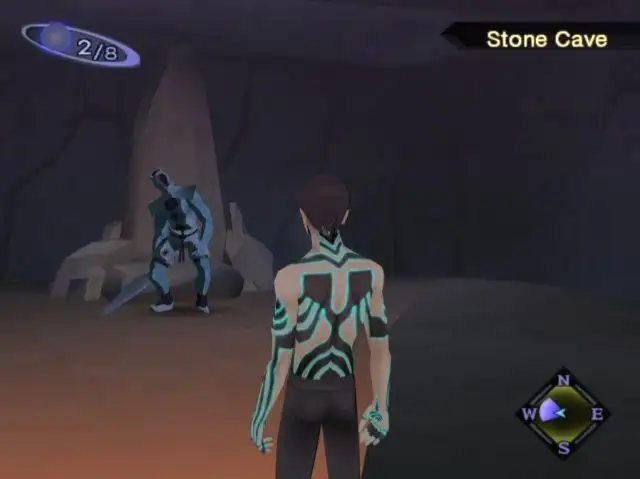
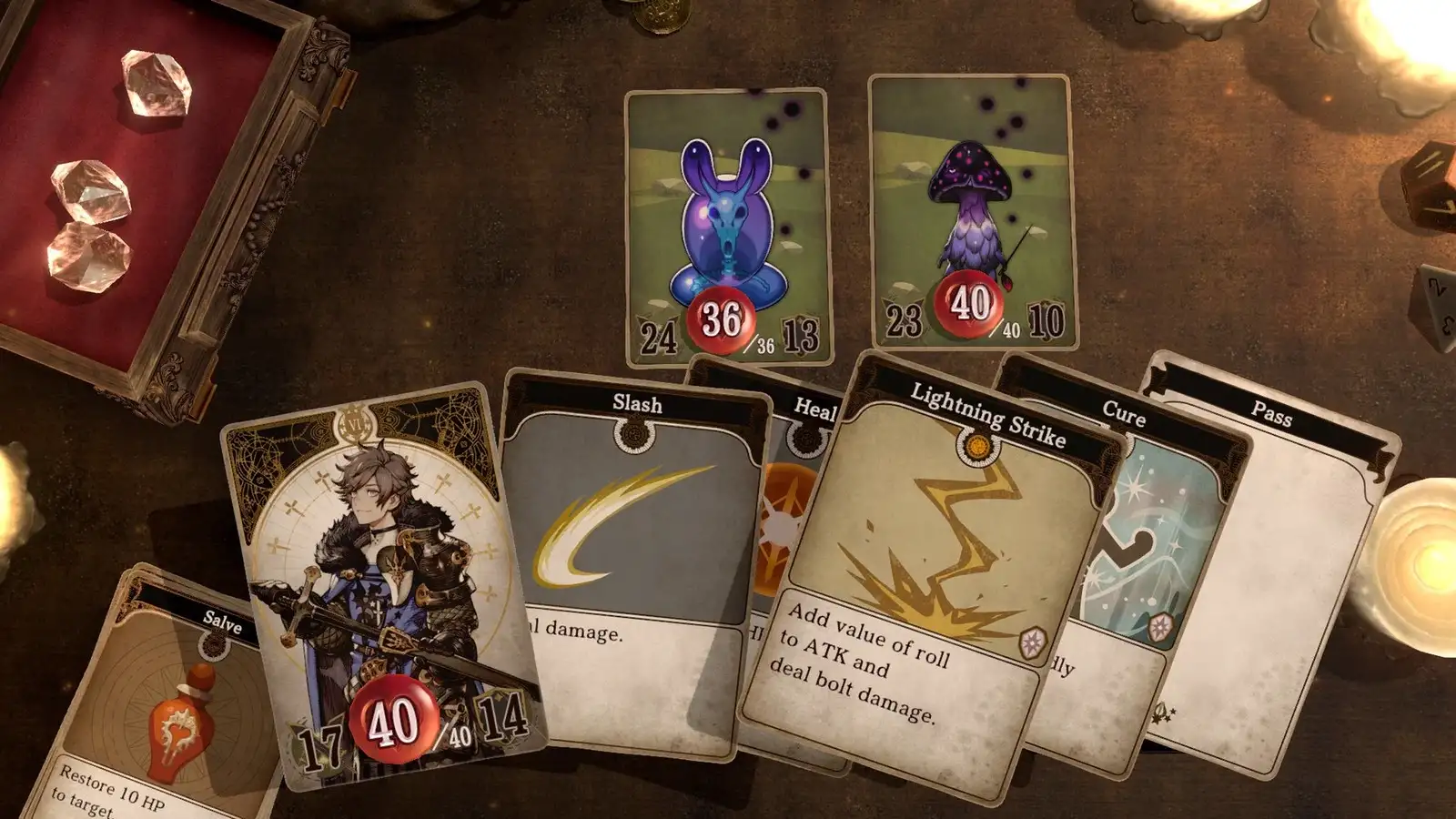
From left to right: Shin Megami Tensei III: Nocturne; Voice of Cards: The Isle Dragon Roars.
Another generally desirable factor is for a transition to occur quickly, so that the player doesn’t waste so much time during the transition and it doesn’t get too repetitive during his exploration. This principle, however, can be ignored in the case of a special battle, such as a boss battle, or in other exceptional cases that are well motivated by the work’s purpose.
This principle is reflected not only in the visual device for the transition but also in the musical transition. Good classic and functional examples of musical transition in JRPG are found in Nobuo Uematsu’s compositions for the Final Fantasy series.
Nobuo Uematsu composes battle transitions with diminished arpeggio flourish followed by a bass, giving a sense of threat and setting the pace of the fight. Check out some of these pieces below. The first three pieces are examples of quick musical transitions to common battles, the last piece, from Final Fantasy V, is an example of a longer and more dramatic musical transition to a larger battle in a boss fight occasion, Gilgamesh.
(The excerpts I refer to below, in the scores, correspond to the first seconds of music; when you press “play” you can be directed to different moments of the music. It is recommended that you listen to the beginning of the pieces on Spotify.)
“Battle”, Final Fantasy I Original Soundtrack, Nobuo Uematsu. Source: Spotify

“Battle 1”, Final Fantasy IV Original Soundtrack, Nobuo Uematsu. Source: Spotify.

“Battle 1”, Final Fantasy IX Original Soundtrack, Nobuo Uematsu. Source: Spotify.

“Battle at the Big Bridge”, Final Fantasy V Original Soundtrack, Nobuo Uematsu. Source: Spotify.

Regardless of the musical style of battle (classical, jazz, rock, pop, concrete music, etc.), it is important to consider the “surprise” element of the random encounter and creatively explore this in favor of the work’s proposal.
As I demonstrated in this essay, there is still a place for the random encounter system in RPGs. There are still things that this system does just as well or better than the visual encounter system, plus it’s especially useful for limited visibility scenarios where unexpected enemy encounters are preferable for a more immersive, challenging, and coherent experience.
More than ever, care is needed today to implement the system of random encounters in a modern and intelligent way. This care involves observing coherence with the work’s proposal, especially from a visual and gameplay point of view, in addition to sophisticating and specializing the encounter algorithm and establishing good musical transitions. In this article, I also offered some tips for these aspects.
Also, as a great lover of classic and modern RPGs, I hope to continue to see both systems coexisting not only in the same market but also within the same works. There is no reason to be afraid to implement both systems, alternating, depending on the fictional context, and both systems can be implemented creatively and interestingly either in a specialized way in an entire adventure or in a specific way for a moment of gameplay.
